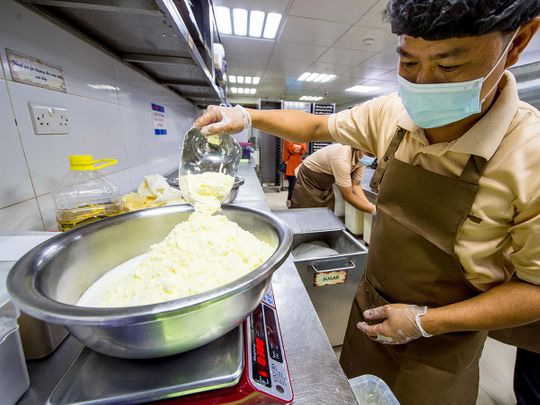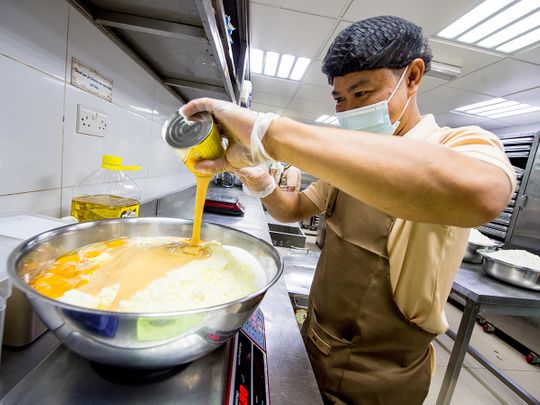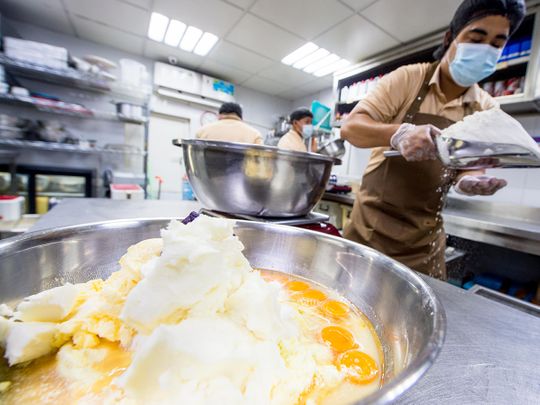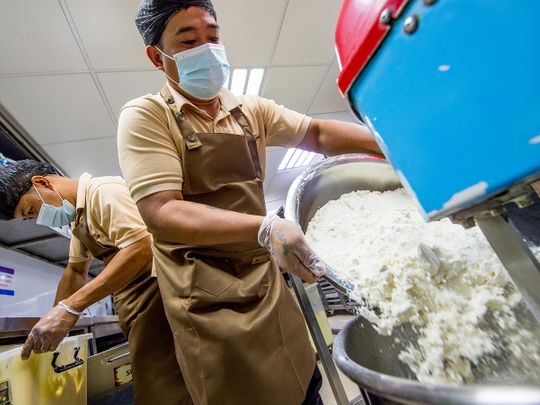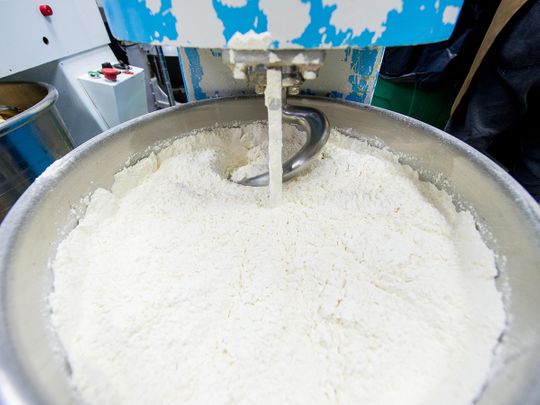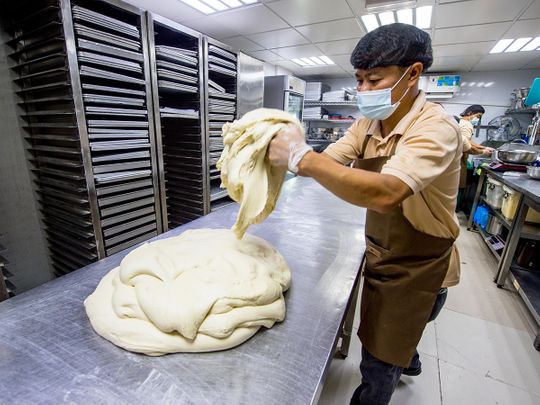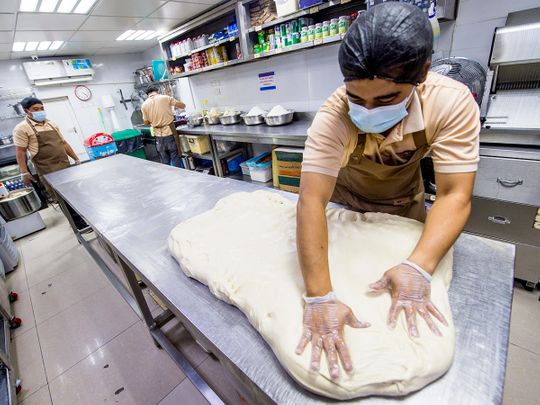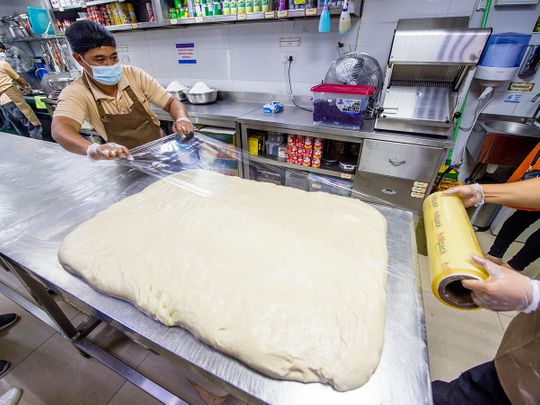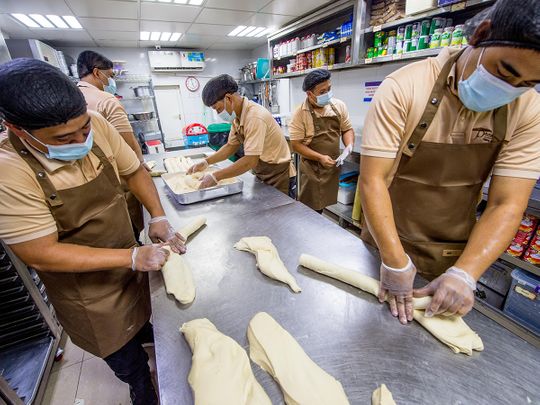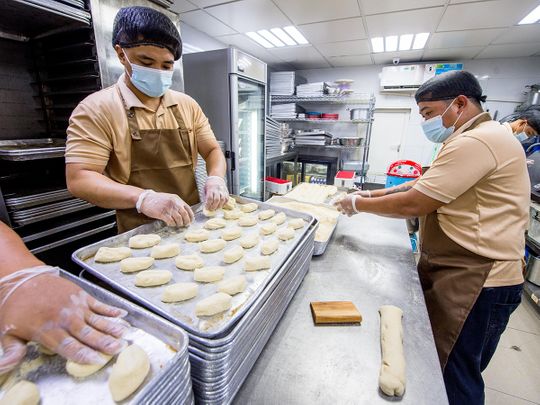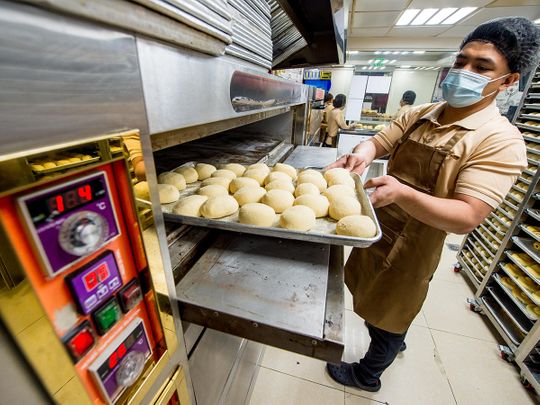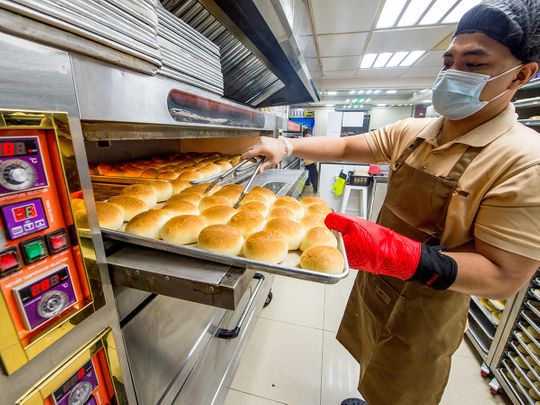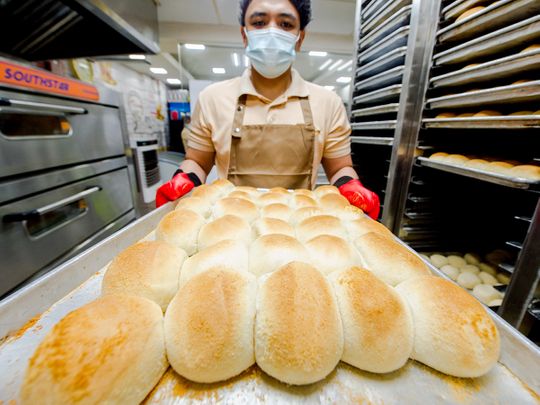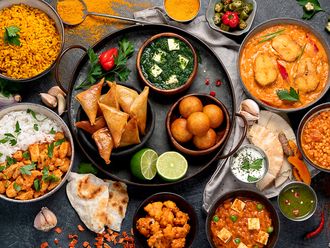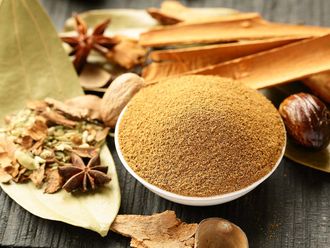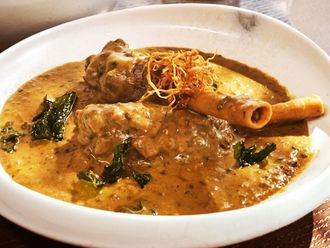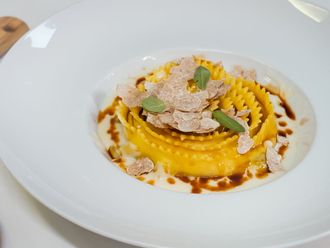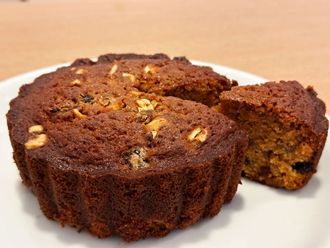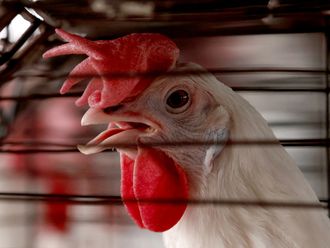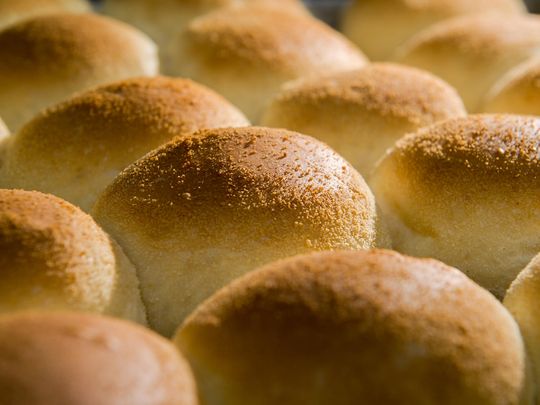
Dubai: The sound of my alarm woke me up on a Saturday. It was 2am on the dot. As I stumbled to shut the jarring tone of my greatest enemy, sleep lingered around me saying, "...it’s okay, you can sleep a little more."
"Stop it," I retorted. "I need to do this."
I pulled myself off the bed, freshened up and got dressed. It was time to get out, but silently. I didn’t want to wake my mum up so early. I (very slowly) unlocked the door, only to find my nine-month-old kitten staring at me.
My heart took a bit of a scare and I steadily walked to the hall – my feline walking beside me – only to find that my parents were already awake. My dad grabbed his keys to drop me to my colleague’s house, sleep lured me again. It hummed: "You can sleep in the car..."
"No, I will not." By then, I was determined not to fall asleep.
So, I made conversation with my dad till we reached my colleague from the Gulf News Food team, Sonal's house – and with my colleague – from her house till the bakery.
Truth be told, normally I would have given in to my subconscious mind’s temptation, but I had a much bigger motive – to try out the legendary Filipino baguette titled ‘Pandesal’.
Really, at 2am? Why would this woman choose a bun over her sleep?
Well, why wouldn’t I? Pandesal (or pan de sal) is a bread kneaded with a 400-year-old history of colonisation. Baked to perfection, it is made with a limited ingredients and served fresh out of the oven, every day.
And there was an added impetus, we had been given a lead on a Filipino bakery that was a well-kept secret within the community. So, off we went sleuthing in the wee hours of the morning, in search of the secret bakers of Panadero…
Finding Panadero
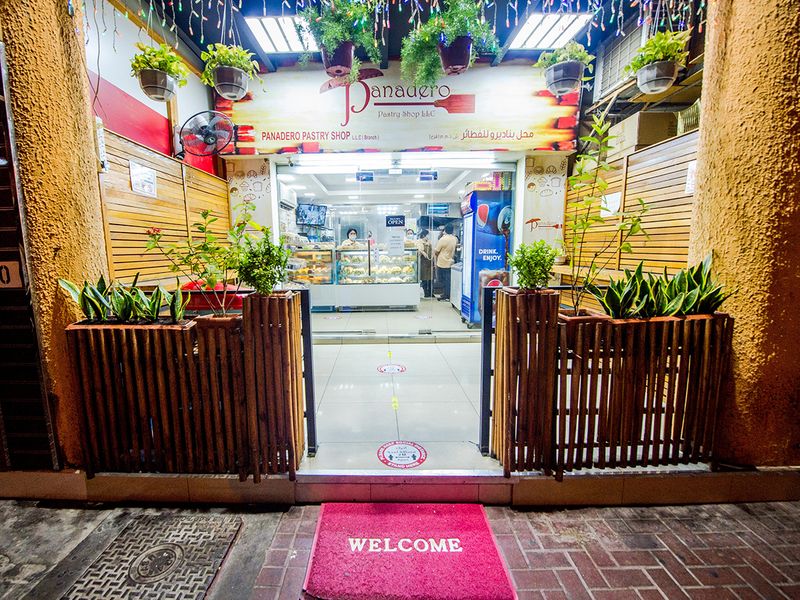
So well-known is the bakery in Satwa that it opens shop at 4am, and there are people who arrive shortly for their daily Pandesal.
Hidden between a row of shops, lies the homely pastry outlet. To the outsider, the shop looks low lit and under a gentle slumber, while its bakers dash around upstairs, working with the ingredients to create the perfectly consistent dough.
We finally reached the bakery, but not before multiple shoe bites and bandages, because we didn’t realise there were three branches of Panadero in Satwa!
When we finally reached outlet, a set of smiling faces peered through the window at us, asking us to come in. As we walked in, we were greeted by people so warmly that it gave us the feeling of a reunion of sorts. Happy people make happy food.
We climbed up the stairs and were greeted by a group of bakers who had already been up since 1am. Without a hint of fatigue or restlessness, the group of men carried out each task seamlessly. Like the pandesal, Panadero’s bakers work around the clock in shifts.
While my colleague headed off to tape the baking procedures on video, I found myself in the company of Chaida Das, who gave up her 9 to 5 insurance job to work full-time as a homemaker and bakery owner.
Like her colleagues, she was welcoming and quick to answer all my questions. She’s been in business for a while, and was happy to share her story.
But, this is not the story of just another bakery. This is the story of a bakery whose baked bun is a life-changer for those who can’t afford a full meal every day.
Making the Filipino baguette
The 400-year-old recipe may have stood the test of time, but adding in the required ingredients of flour, milk, eggs, butter, sugar and yeast, which is kneaded into a dough to get the right consistency is the ultimate challenge.
The pandesal is made in three shifts through the day, and takes a minimum of six hours of preparation before it is placed in the oven. Once fermented, the baker then separates it into small evenly cut pieces.
Thirty yeasted rolls of dough take its place on a tray, which is then placed on rack and pushed close to a wall. The lights go out and the tabernacle of bakers head home, only to be replaced by the next shift.
Six hours into the night, all the way into the break of dawn, the well-rested 30 are slid out from the rack and placed into an oven, ready to be baked into their true form. Fifteen minutes later, the pale and yellow dough is replaced with golden-brown patina and a glossy texture.
Taken out with utmost care, the baker then sets it aside to cool, and arranges it to be served to a line of restless customers, who are set on their marks to bolt out of the door on receiving their bag of freshly baked goods.
This is how the Pandesal is sold at one of Dubai’s hidden gems, Panadero.
Historians would reveal that although the pandesal is staple to the Philippines, it was actually introduced by the Spanish who once travelled the seas in the name of colonialism. Naturally, for this metamorphosis to take place, patience is key.
That, and 400 years of colonial past rolled into a bread does have quite a specialty to it, so getting the ingredients and process right isn’t as simple as it looks.
But before we delve further into this, here’s a short history lesson…
A colonial reminder

While the country’s cuisine primarily focused on rice, the Spanish bought in baked goods along with them in the 16th century. Since wheat was never native to the country, bread was not exactly very affordable.
As per the food site eater.com: "The majority of Filipino historians agree that the earliest version of wheat-based bread was introduced by Portuguese explorers and early settlers in the 1500s. With the Portuguese, and eventually the Spanish colonizers, came strong ties to the Catholic church, which ... needed wheat to produce 'the hostia, or sacramental bread, in their quest to convert indigenous people'. ...But this early bread iteration would have been quite different from pandesal."
Filipino culinary site Pepper.ph said that the Spanish government established the first bakery in the country around 1631. They sourced "...wheat flour from China .... When the Americans came in, they brought with them baking powder, yeast, baking sheets, and automatic slicers."
Pan de sal means 'bread of salt' in Spanish, for the pinch of salt added to the dough, although the final result is a sweet bread. It was created as the Spaniards’ answer to the French baguette. The original pan de sal was made with wheat flour, so it was hard and crusty, and of course, more expensive. But the Philippines does not produce wheat, and bakers had go for cheaper quality flour. However, that resulted in a weaker dough structure but a softer texture, which is much loved today.

Both our bakery’s name [panadero] and the pandesal came from two Spanish words, which means baker and salted bread, respectively
“Both our bakery’s name [panadero] and the pandesal came from two Spanish words, which means baker and salted bread, respectively," says Chaida Das in an interview with Gulf News.
When Chaida talked us through the process, she referred to pandesal as the Philippine baguette, which has found favour amongst the early bird commuters who make a stop every day, before heading to work.
“When we started in 2013, we had one priority – to serve our pandesal fresh, hot and affordable. This is also known as the poor man’s bread, which is also one of the reasons why our bread is priced at Dh1 for two pieces,” explains Das.
The pandesal is best paired with a cup of coffee, or sliced in half to be eaten as a sandwich. Unlike all breads, the pandesal tastes sweet at the first bite, followed by hints of butter and salt.
With their success, came their greatest challenge: COVID-19.
Challenges are inevitable. To tackle them and become stronger is the ultimate goal after all. Today, Chaida runs a business with over 6 branches in Dubai itself.

“The pandemic has to be one of the biggest challenges we have had to overcome. Before the pandemic, we were fine. But, I’m just happy to say that we look after our staff very well. We did not cut their salaries, or cause them a hindrance of any kind because they are just as important as running our shop. Now we have summer and the pandemic, so there are comparatively lesser people who come in to our shop. Plus to keep up with the health protocols, we only allow two people at a time in the shop,” says Das.

With three branches in Satwa alone, this franchise has found its locations at two branches in Deira, one branch along December 2 Street and an upcoming branch in Karama, which is set to open near the Metro Station.
An assignment to remember
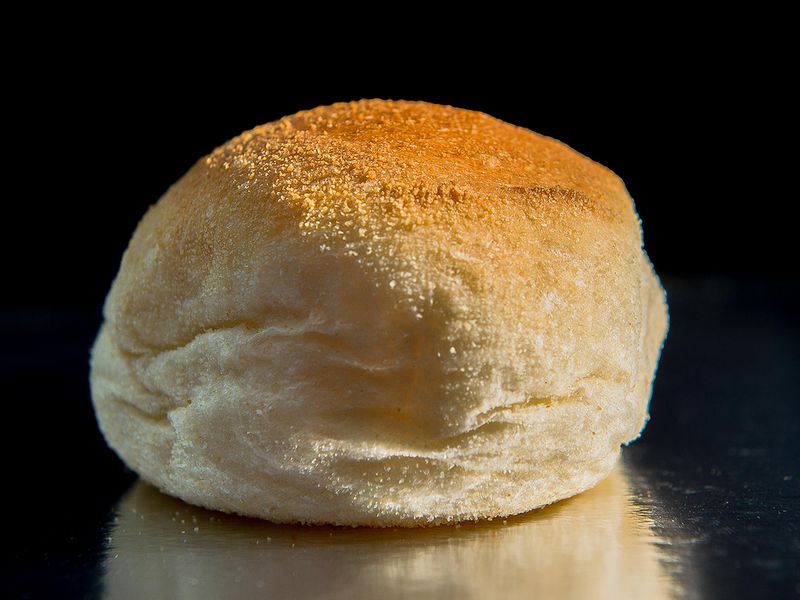
When I asked a few customers about why they come here every day for the pandesal, they all said “it is delicious”, “it’s wonderful” and rushed out, to head to work. But there was one person who said, “why not?”
And that was it. Why wouldn’t you come for a bite of this soft, brown, almost melt-in-your-mouth kind of bread? I do feel that if something smells as good at it looks, the taste wouldn’t be so far behind.
That’s exactly what the pandesal was. How can you ever get over something so beautifully and carefully made? Simple joys of life need to be accounted for. We often forget the little things and focus on the bigger picture, but maybe it is time we note the details as well.
As I bit into my first bite of the pandesal on the way home, I was happy that I chose this over my sleep. After all, food isn’t something that should ever be compromised on.
Get the recipe!
Fret not, for we know this tale would be incomplete without a recipe you could try. And Panadero has done just that because food shared is joy multiplied. Click here for the recipe.
Do you know any other such hidden food gems of the UAE? Share them with us at food@gulfnews.com




